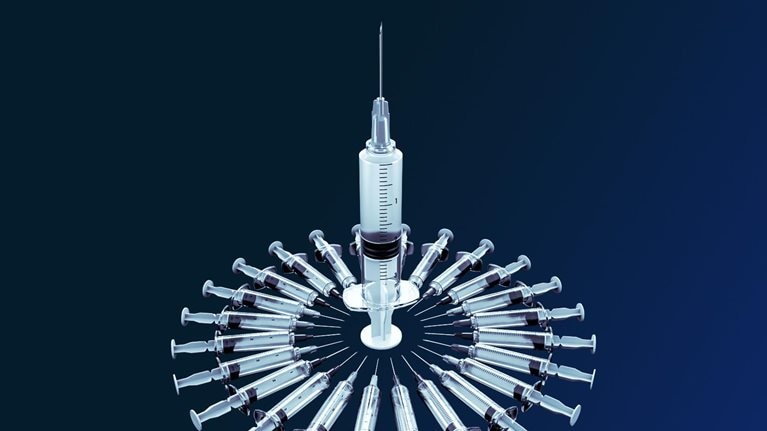Imagine you’re the leader of a small biopharmaceutical company. As your new drug makes good progress through clinical trials, you face a moment of truth: Do you have what it takes to launch your product yourself?
Twenty years ago, the answer to that question would almost certainly have been “no.” Small biotechnology and biopharma companies followed a well-worn path for their assets and explored licensing, partnership, and outright acquisition as their means to product launches. But that pattern has shifted over the past decade or so as more small companies decide to launch their products themselves.
Globally, those first-time launchers account for more than a quarter of all new molecular entities submitted to the US FDA since 2016 (Exhibit 1). That share rises to more than a third when including subsequent launches from companies that launched their first product after 2001.

This article looks at the reasons for the shift in drug launches and identifies four areas of focus that can help first-time launchers maximize their chances of a successful launch.
Why is the number of first-time pharma-product launchers on the rise?
Three converging factors are swelling the ranks of first-time launchers of pharma products—the business cycle, the availability of talent, and the proliferation of vendors:
- Business cycle. For much of the past five years, small drug companies found it relatively easy to raise money. Economic growth was strong, interest rates were low, and venture-capital (VC) funding was flowing into healthcare, especially in late-round deals, which reached $4 billion in 2018. As M&A volumes grew, so did the valuation premium for small biotech companies, and large pharma companies tended to focus on megadeals (except for an overall drop in M&A activity, especially in the first half of 2020), with which premiums were easier to achieve through cost synergies.
- Talent. The intense M&A activity of large pharma companies has led to a substantial exodus of their talent—including experienced commercial leaders—to smaller companies, boosting the confidence of those smaller companies in launching for themselves. Additionally, the steady increase in the number of biopharma-related jobs has led to an increase in related training. The resulting access to ever-more qualified employees has also bolstered the confidence of first-time launchers. In the United States, for instance, R&D hubs in California and Massachusetts are rapidly becoming sources of seasoned commercial as well as research talent. Between 2000 and 2020, 31 out of 85 US small launchers originated from those two areas.
- Vendors. Today’s small pharma companies not only have more access to talent but also have more options to buy key commercialization capabilities. A growing list of vendors provide specialist support in functions such as manufacturing, sales, patient services, and pharmacovigilance. Almost half of all first-time launchers operate in specialty and rare market segments in which an in-depth understanding of the disease area is more important to success than is the ability to invest in a large commercial footprint. Using vendors allows first-time launchers to commercialize their assets without having to build large organizational footprints at a time when they are likely to lack the necessary capacity for investment.
What difficulties do first-time pharma-product launchers face?
Our analysis shows that many first-time launchers of pharma products struggle to maximize drug adoption and realize the expected value from their launches. Their share of successful launches is well below that of experienced launchers (Exhibit 2). Whereas almost half of launches from experienced launchers exceed analysts’ prelaunch forecasts, the share for first-timers is just 39 percent. The median first-time launcher reaches just 63 percent of expectations, compared with 93 percent for the experienced equivalent.

Why do first-time pharma-product launchers matter?
The next few years could transform the fortunes of innovative biopharma companies as their share of new launches increases. For instance, out of the 39 blockbuster launches (those with more than $1 billion in forecasted sales) due to take place between 2021 and 2025, 22 are expected to come from first-time launchers—a share of 56 percent (Exhibit 3). That would represent a sizeable increase over the period from 2016 to 2020, when less than 20 percent of blockbusters came, or were expected to come, from first-time launchers.
Although many of the new launchers may be destined to become acquisition targets for large pharma companies, the market shift from established to emergent players looks set to continue. That, in turn, will serve to heighten the interest of VC and other investors in biopharma and biotech.

How do first-time pharma-product launchers get it right?
Among the successful first-time launchers of pharma products that we studied, we have identified four broad areas of focus that could make all the difference in the lead-up to launch.
Expand the sources of insight
First-time launchers sometimes rely on relationships with a few key opinion and trial-site leaders to inform their thinking on pricing, sales-force deployment, and other critical decisions. That approach can leave them with blind spots and overoptimistic projections of how prescribers will react.
By contrast, successful launchers invest early to build deep understanding of the market in their disease areas, which helps them judge how to position their drugs among the therapies available. Similarly, they draw on a wide range of data sources to make rigorous assessments of how providers, patients, and payers are likely to react to their new product.
One first-time launcher used claim data to identify a set of smaller payers with a higher prevalence of the primary indication for its new drug so that it could engage with them early in the launch process. The company drew on the same data to articulate a value proposition geared to the broadest patient population and to identify a subset of 5,000 out of 95,000 healthcare professionals whose prescribing history suggested they might account for a large proportion—60 to 70 percent—of prescriptions for the drug. The targeted approach helped the company develop a realistic launch plan that was around 30 percent smaller than the original budget, freeing up resources that it then redeployed in other priority areas.
Invest for success
Many first-time launchers endure years of tight budgets while pouring every dollar into their development program, but they shouldn’t allow that mindset to deprive their launches of resources. Companies commonly spend more than ten times their expected first-year revenue during their launch years, and McKinsey research shows that dedicating a larger share of the budget to activities before and during launch is associated with a greater likelihood of meeting or exceeding sales targets. Our analysis of new launchers of pharma products between 2014 and 2017 showed that those in the top half of launch-year spending on selling, general, and administrative tasks were more than twice as likely as those in the bottom half to beat analyst forecasts with a success rate of 67 percent, compared with 29 percent.1
Instead of starting by setting budgets, first-time pharma-product launchers would do better to begin by understanding the potential of their drug and then working to raise sufficient funds to provide appropriate support during launch. In other words, they should tailor their go-to-market approaches to their products, not their statures as small biotech companies. For instance, some small, US-based companies manage their home markets for themselves and raise funds and free up management attention by pursuing a partnership or licensing approach in other markets. In some cases, investors may have opportunities to step in and provide financing for first-time launchers.
One small pharma company was planning its first major launch in a highly competitive indication and needed a substantial sales force to reach primary-care providers. To ensure that its voice was heard above the noise from larger rivals, the company went back to investors and raised more than $1 billion to build the necessary sales force—and invest in best-in-class patient support, substantial direct-to-consumer marketing, and innovative engagement channels. That investment enabled the company to beat its sales forecast and carve out a leading position in its indication, despite head-to-head competition from established players.
Build the core team early
Some first-time launchers don’t start building their teams until they are well advanced in their launch planning. As a result, they may struggle to catch up in key activities that require long lead times, such as developing foundational insights, designing commercial strategy, and planning external engagement. Our experience suggests that companies would be wise to take early steps to identify the five to ten roles that are key to a successful launch and to fill them with top talent.
Leading pharma-product launchers begin building their team as early as 18 months before launch. They often start with external-facing medical and market-access roles so that they can begin engaging with key stakeholders to derive valuable insights and create excitement about their new products.
One small company identified its critical functions as medical affairs, market access, and analytics; defined job descriptions for the key roles; and put staff in place 24 months before launch. To maximize agility in other functions, it signed deals with contract sales organizations and third-party distributors. When the company’s launch was delayed, it was able to keep its core team in place and adjust vendor capacity instead. That flexibility prevented the whipsawing of layoffs and hiring and allowed the core team to keep working to maintain continuity as the company prepared for its deferred launch.
Track constantly and adjust quickly
Launches are complex, and first-time pharma-product launchers will have new functions that lack the experience an established pharma company would bring. Most companies will build detailed road maps for their launches, but they should take care not to let those plans lull them into complacency. If key functions drift behind schedule, critical activities could be put at risk, and the launch could be delayed.
Leaders must identify issues as they arise and empower a small team to resolve them rapidly. That done, team members can switch from tracking internal activities to monitoring the relevant markets for early signs from stakeholders. Any deviations from an expected launch trajectory need to be detected and addressed promptly.
When one small biotech company was preparing for its first launch, it set up a control tower to manage execution and track performance against the weekly objectives that led up to its launch goals. It also set up daily data feeds from distributors and third-party vendors so that it could swiftly shore up any areas of weakness that emerged. The control-tower team held a 15-minute stand-up huddle every morning to track progress in every function, and the company CEO made a point of dropping in to be briefed at the end of every week. When early data from medical engagement suggested that disease-state education wasn’t as effective as expected in a key European market, the company quickly stepped in to redesign material for the country concerned to address its particular needs better.
As the next generation of biopharma organizations evolve from their initial R&D focus to become integrated, end-to-end companies, which of them will rise to the challenges of becoming first-time product launchers? One thing is certain: the area isn’t just a matter of interest for leaders of small biopharma companies. Executives of large pharma companies looking for acquisition opportunities and VC firms with funds to invest in biotech will also pay close attention.

